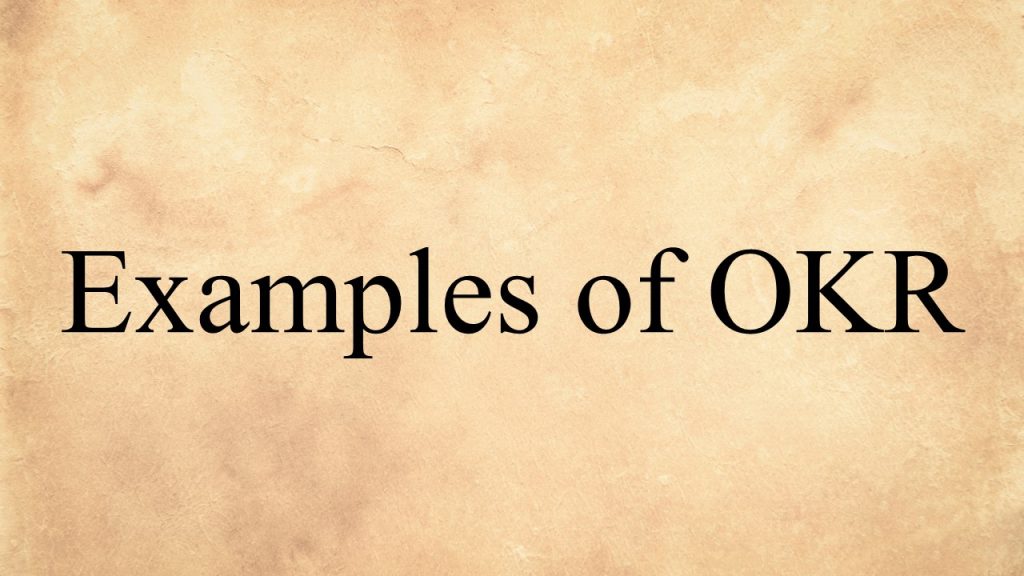
Client centricity plays an important role in improving low EBITDA margins in the B2B sector. When organizations focus on their clients and put their needs at the center of their business strategies, they are able to increase customer satisfaction, improve client retention, and drive revenue growth. This, in turn, can lead to improved EBITDA margins.
Here are some ways in which client centricity can help improve low EBITDA margins in B2B organizations:
- Increased Customer Satisfaction: By putting the needs of their clients first, organizations can increase customer satisfaction and build stronger, more meaningful relationships with their clients. This can result in increased client retention and reduced churn, which can lead to improved EBITDA margins.
- Better Understanding of Customer Needs: When organizations focus on their clients, they gain a deeper understanding of their needs, preferences, and pain points. This knowledge can be used to inform product and service development, as well as pricing and sales strategies, leading to increased revenue and improved margins.
- Improved Client Retention: Client centricity can help organizations build stronger relationships with their clients, leading to improved client retention. When clients are satisfied with the products and services they receive, they are less likely to switch to competitors, which can result in improved EBITDA margins.
- Increased Revenue: By focusing on their clients, organizations can increase their ability to sell more products and services, and drive revenue growth. This, in turn, can improve EBITDA margins by increasing the top-line while reducing costs.
Free Download
Download free customer experience self-assessment check sheet that is useful before commencing client centricity journey in your organization.
This self-assessment check-sheet will help you to quickly evaluate your Customer Experience program and learn about areas that need improvement. This is a qualitative assessment. Hence you should take an unbiased view during evaluation. There are 2 parts in this assessment. First contains 16 questions and you can evaluate where your organization stands in each of those areas. Second part contains, ideally expected responses which can be used for comparison.

In conclusion, client centricity is an essential component of improving low EBITDA margins in the B2B sector. By putting the needs of their clients first and building strong, meaningful relationships, organizations can increase customer satisfaction, improve client retention, and drive revenue growth, leading to improved EBITDA margins.

North Star Objectives are a company’s core, overarching goals that guide decision-making and help ensure everyone is aligned towards a common vision. They serve as a beacon that keeps teams focused on what truly matters and helps them prioritize their efforts and resources.
An example of a global company with a North Star Objective is Amazon. Amazon’s North Star Objective is to be the world’s most customer-centric company. This objective guides all of their decision-making and drives their focus on providing the best possible experience for their customers. As a result, Amazon has built a loyal customer base and become a leader in e-commerce and cloud computing.
Steps involved in developing North Star Objectives are :
- Identify the key problem or opportunity: Start by understanding the problem or opportunity that you want to solve for your customers.
- Define your customer segments: Get a clear understanding of who your customers are, their needs, and what they value.
- Determine your product’s Unique Value Proposition (UVP): Identify what makes your product unique and valuable to your customers.
- Establish measurable goals: Set specific, measurable, and achievable goals that align with your UVP and customer segments.
- Align your team: Ensure that everyone on your team understands the North Star Objective and is aligned with it.
- Monitor progress and adjust as needed: Continuously monitor progress towards your North Star Objective and make adjustments as needed.
- Make it actionable: Create a plan to turn your North Star Objective into action, including metrics and key results to measure success.

Here are some pro tips for writing effective Key Results (part of OKRs – Objectives and Key Results):
- Make sure Key Results are quantifiable: Key Results should be expressed in a way that is easily measurable, such as a number, percentage, or deadline.
- Align Key Results with Objectives: Key Results should support the Objectives and help measure progress towards achieving them.
- Make Key Results challenging, but realistic: Key Results should be challenging and drive progress, but they should also be realistic and achievable.
- Use a variety of metrics: Using a mix of metrics, such as financial metrics, customer satisfaction metrics, and employee engagement metrics, can help provide a comprehensive view of progress towards the Objective.
- Encourage collaboration: Key Results should be written with input from team members and should encourage collaboration and teamwork.
- Consider including interim milestones: Including interim milestones can help track progress towards Key Results and ensure that the team stays on track.
- Review and adjust Key Results regularly: Key Results should be reviewed regularly to ensure they remain relevant and aligned with the Objective and company goals.
By following these tips, you can write effective Key Results that support sustainable business growth and drive progress towards your company’s goals.

Here are some pro tips for writing effective Objectives (part of OKRs – Objectives and Key Results):
- Make sure Objectives are SMART: Objectives should be Specific, Measurable, Achievable, Relevant, and Time-bound.
- Keep Objectives clear and concise: Avoid using overly complex language or including too much detail.
- Align Objectives with company goals: Objectives should align with and support the company’s overall goals and vision.
- Make Objectives challenging, but realistic: Objectives should push individuals and teams to achieve more, but they should also be attainable with effort and dedication.
- Encourage collaboration: Objectives should be written with input from team members and should encourage collaboration and teamwork.
- Consider adding Key Results: Including Key Results that support the Objective helps to ensure that the Objective is specific and measurable.
- Review and adjust Objectives regularly: Objectives should be reviewed regularly to ensure they remain relevant and aligned with the company’s goals and vision.
By following these tips, you can write effective Objectives that support sustainable business growth and drive progress towards your company’s goals.

Here are some examples of OKR (Objectives and Key Results) that an organization could set:
Increase sales revenue by 20% in the next quarter
- Objective: Increase sales revenue
- Key Results:
- Achieve a 15% increase in customer acquisition
- Increase average order value by 10%
- Launch 3 new products that contribute to revenue growth
Improve employee engagement and satisfaction:
- Objective: Improve employee engagement and satisfaction
- Key Results:
- Conduct employee satisfaction surveys and analyze results
- Implement a recognition and rewards program for employees
- Increase employee participation in training and development programs by 25%
Enhance customer experience:
- Objective: Enhance customer experience
- Key Results:
- Reduce customer complaint resolution time by 50%
- Increase customer satisfaction score from 80% to 85%
- Implement a customer feedback system and act on customer feedback to improve customer experience
These are just a few examples, and OKRs can be tailored to specific organizational goals and objectives. The key is to ensure that the objectives are specific, measurable, achievable, relevant, and time-bound (SMART).

Some of the common reasons for the OKR implementations failure include:
- Lack of buy-in: OKRs are only effective when they are embraced by the entire organization. If there is a lack of buy-in or understanding of the OKR framework, employees may not fully understand its purpose or may not see its value, leading to resistance.
- Overly complex goals: If the OKRs are overly complex or difficult to understand, employees may struggle to see how their work contributes to the achievement of the goals. This can lead to a lack of motivation and engagement.
- Unclear ownership: If the ownership of the OKRs is not clear, employees may not understand who is responsible for achieving the goals, or who they should turn to for support or guidance.
- Lack of resources: If the organization does not provide the necessary resources, such as time and budget, to achieve the OKRs, employees may feel frustrated and unable to deliver on the goals.
- Poor alignment: If the OKRs are not well aligned with the organization’s broader strategy, employees may struggle to see how their work contributes to the overall success of the organization.
- Infrequent reviews and adjustments: If the OKRs are not reviewed and adjusted regularly, they may become stale and no longer relevant, leading to a lack of motivation and engagement.
In order to avoid these issues, it is important for organizations to carefully design and implement their OKR framework, ensuring that it is well understood and embraced by the entire organization, and that the goals are well aligned with the organization’s broader strategy. Regular reviews and adjustments of the OKRs can also help to keep the framework relevant and effective over time.

The use of a balanced scorecard (BSC) and OKRs are not mutually exclusive, and both frameworks can provide valuable insights and benefits for organizations. The choice between using a BSC or OKRs, or using both frameworks together, will depend on the specific needs and goals of an organization.
The balanced scorecard is a performance management tool that provides a comprehensive view of an organization’s performance by measuring and tracking key performance indicators (KPIs) in four areas: financial, customer, internal processes, and learning and growth. The BSC provides a broad view of an organization’s performance and can help organizations make data-driven decisions and track progress towards their goals. strategy maps in balanced scorecards (BSCs) are indeed designed to drive performance and growth by providing alignment. Strategy maps used in BSC provide a visual representation of an organization’s strategy and help to align the organization’s efforts towards its goals. The strategy map links the organization’s vision and mission to its objectives, measures, and initiatives, providing a clear picture of how the organization will achieve its goals. By providing a visual representation of the organization’s strategy, the strategy map helps to ensure that everyone in the organization understands how their work contributes to the achievement of the organization’s goals and objectives. In this way, strategy maps play an important role in driving performance and growth by aligning the organization’s efforts towards its goals and ensuring that everyone is working towards the same objectives.
OKRs, on the other hand, are a goal-setting framework that provides a clear and specific structure for setting and tracking goals. OKRs help organizations align their efforts towards achieving specific and measurable objectives, and provide a clear understanding of what success looks like and how it will be achieved. OKRs can provide a more focused view of an organization’s performance and help organizations prioritize their efforts and resources.
In some cases, organizations may choose to use both the BSC and OKRs, leveraging the strengths of both frameworks to drive performance and growth. The BSC can provide a broad view of an organization’s performance, while OKRs can provide a more focused view and help organizations align their efforts towards specific and measurable objectives.
In summary, the choice between using a BSC or OKRs, or using both frameworks together, will depend on the specific needs and goals of an organization. Both frameworks can provide valuable insights and benefits, and organizations may choose to use both frameworks together to drive performance and growth

Customer experience (CX) and client centricity are related concepts, but they are not the same thing.
Customer experience (CX) refers to the overall perception that a customer has of a company, based on their interactions with it. It includes all touchpoints, such as the website, customer service, and in-store experience, and it covers the entire customer journey, from awareness to post-purchase. CX is a holistic approach to understand, design and measure the customer journey, and make improvements that increase customer satisfaction and loyalty.
Client centricity, on the other hand, is a business strategy that prioritizes the needs and preferences of the customer. It is a way of thinking and acting that puts the client’s needs at the center of all business decisions. It is about understanding the customer’s needs and tailoring products, services, and interactions to meet those needs. It is a way of creating value for the customer, and it is a long-term approach to build trust and loyalty.
In summary, CX is focused on measuring and improving the customer’s overall perception of the company, while client centricity is focused on understanding and addressing the specific needs of individual customers. Both concepts are important, but they have different focuses and goals. A company that wants to provide a great customer experience should also have a client centric mindset.
Free Download
Download your copy of a research report on B2B customer experience practices in India.
Our research is to understand the best practices amongst the enterprises across various sectors in Indian region when it comes to Customer Experience Transformation. Customer Experience as a concept is generally not given the required attention is B2B sector. With increase in the competition in the market, customer experience is one of the major thing which defines the performance of the organization.

Example 1
A company that sells high-end kitchen appliances. This company has a customer experience strategy in place that focuses on creating a seamless and enjoyable shopping experience for customers. They have a user-friendly website, a knowledgeable customer service team, and a well-designed showroom. Customers are greeted warmly upon entering the store, and the sales associates are trained to ask the right questions and guide customers through the purchasing process. Overall, the customer experience at this company is positive and customers feel well-informed and satisfied with their purchase.
The same company also has a client centric approach. They conduct market research and segment their customer base, understanding the different needs and preferences of their target market. This allows them to tailor their products, services, and interactions to the specific needs of different customer segments. For example, they offer a wide range of products for professional chefs, as well as for home cooks, and they have different sales associates to help customers from different segments. They also conduct surveys and collect feedback from customers, to understand their specific needs and preferences and make adjustments to their products and services accordingly.
In this example, the company’s customer experience strategy focuses on creating a positive overall perception of the company, while their client centric approach focuses on understanding and addressing the specific needs of individual customers. Both strategies work together to create a positive shopping experience and increase customer satisfaction and loyalty.
Example 2
A company that sells enterprise software to help with supply chain management. They’ve got a customer experience strategy that makes sure buying from them is a breeze. They’ve got a website that’s easy to navigate, a sales team that’s quick to respond, and an onboarding process that’s as smooth as butter. As a result, their clients are happy with their purchase experience.
But this company doesn’t just stop there, they also have a client-centric approach. They take the time to understand their clients and their specific needs. They research their clients, segment them and tailor their software, services and interactions to specific client segments. For example, they might have different software packages for different industries, and different sales teams to help different client segments. They also ask for feedback and use it to improve their software and services.
In this example, this company’s customer experience strategy is all about making sure their clients have a good overall experience with the company, while their client-centric approach is all about understanding and addressing the specific needs of individual clients. Both strategies work together to create a positive purchasing experience and keep their clients happy.

Client centric strategies play a crucial role in a go-to-market (GTM) strategy, as they help to ensure that the products or services being offered meet the needs and preferences of the target customers. A client-centric approach to GTM focuses on understanding and addressing the unique needs of different segments of customers, rather than treating all customers the same.
Here are a few ways in which a client-centric strategy can be incorporated into a GTM plan:
- Segmentation: Segmenting your target market based on characteristics such as demographics, behavior, and needs can help you to tailor your products and services to specific customer segments. This can result in more effective and efficient marketing efforts.
- Personalization: Personalizing your marketing and sales efforts based on the unique needs and preferences of individual customers can help to build stronger relationships and increase customer loyalty.
- Feedback: Incorporating feedback from customers into your GTM strategy can help you to identify areas for improvement and adapt your approach as needed.
- Empathy: Putting yourself in the customer’s shoes and trying to understand their needs, pain points and preferences can help you to create products and services that better meet their needs.
- Continuous improvement: Continuously monitoring and analyzing customer feedback and market trends to make adjustments to your GTM strategy as needed.
By taking a client-centric approach to GTM, companies can improve their chances of success by creating products and services that are more closely aligned with the needs and preferences of their target customers. This can lead to increased customer loyalty, higher sales, and better overall business performance.
Free Download
Download free XL based touchpoint assessment check sheet for evaluation & benchmarking with instructions
This is an XL based check sheet with two different scenarios – (1) To assess various touchpoints across customer journey and (2) To benchmark touchpoints against competition for similar journey steps.


A Go-To-Market strategy is a plan for how you will bring your products or services to market and reach your target customers. It includes elements such as product positioning, target market, distribution channels, sales and marketing tactics, and key performance indicators.
A good GTM can directly improve the chances of the overall company’s business growth rate.
Here are some steps you can take to create a GTM strategy for your company:
- Understand your target market: It’s essential to have a clear understanding of your target customers, including their needs, pain points, and buying habits. This information can help you to identify the most effective ways to reach and engage with them.
- Define your product positioning: This is how you want your product or service to be perceived by your target customers. It should be based on your understanding of your target market and should take into account your competitive landscape.
- Identify distribution channels: Determine which channels will be most effective for reaching your target customers. This could include online and offline channels, such as e-commerce, retail stores, and direct sales.
- Develop a sales and marketing plan: Once you have a clear understanding of your target market, product positioning, and distribution channels, you can develop a sales and marketing plan that includes tactics such as advertising, public relations, content marketing, and events.
- Set key performance indicators (KPIs): These are metrics that you can use to measure the success of your GTM strategy. Examples of KPIs could include website traffic, number of leads generated, sales, and customer retention.
- Continuously Monitor and Optimize: Once your GTM strategy is in place, it’s important to continuously monitor and optimize it based on the data and feedback you receive. This will help you to adapt to changes in your market and customer needs and fine-tune your approach.
It’s worth noting that creating a GTM strategy is an iterative process. You may need to adjust and refine your strategy as you learn more about your target market and customers, or as the market changes. And also, these steps are general guidelines and the actual steps you need to take might be different based on the specific situation of your company.

Metrics and OKRs serve different purposes and complement each other in various ways.
Metrics are specific, measurable values that help organizations track their performance and progress towards specific goals. Metrics are typically used to evaluate performance and make data-driven decisions. They provide a clear understanding of what is being measured and how progress is being made.
OKRs (Objectives and Key Results), on the other hand, are a goal-setting framework that provides a clear and specific structure for setting and tracking goals. OKRs help organizations align their efforts towards achieving specific and measurable objectives, and provide a clear understanding of what success looks like and how it will be achieved.
When used together, metrics and OKRs can provide a powerful toolkit for driving performance and growth. Metrics provide a clear understanding of what is being measured and how progress is being made, while OKRs provide a clear structure for setting and tracking goals. This can help organizations make data-driven decisions and align their efforts towards achieving specific and measurable objectives.
In summary, even if a company has a strong metrics culture, OKRs can still provide significant value by providing a clear structure for setting and tracking goals and aligning efforts towards achieving specific and measurable objectives.

Grading in OKRs refers to the process of evaluating the progress made towards achieving the objectives and key results set in the OKRs. The grading process helps to determine the level of success achieved and provides feedback on areas that need improvement.
Here’s how to grade OKRs:
- Frequency: OKRs should be graded regularly, typically at the end of each quarter or half-year. This helps ensure that progress is being monitored regularly and that any necessary adjustments can be made in a timely manner.
- Who should grade: OKRs can be graded by the individuals who set the objectives, their managers, or a designated team within the organization. It is important to ensure that the grading is done objectively and consistently across the organization.
- Criteria: The criteria for grading OKRs should be based on the specific objectives and key results set in the OKRs. For example, if the objective is to increase sales by a certain percentage, the criteria for grading might be the actual sales figures achieved.
In general, OKRs are graded on a scale of 0-1, with 0.0 indicating no progress and 1.0 indicating full attainment of the objective. Grading provides a clear picture of progress and allows individuals and teams to focus on the areas where they need to improve.
It is important to note that the grading process should be a supportive and constructive feedback mechanism, rather than a source of stress or negativity. The focus should be on learning and continuous improvement, rather than on assigning blame or punishment for not achieving objectives.
OKRs can be graded at different frequencies, depending on the nature of the objectives and the goals of the organization. Here are two common approaches to grading OKRs:
End of cycle grading: OKRs are graded at the end of each quarter or half-year, after the set timeframe for achieving the objectives has passed. This approach is suitable for objectives that are long-term or have a significant impact on the organization and its operations.
Weekly or monthly grading: OKRs are graded on a regular basis, such as every week or every month. This approach is suitable for objectives that are more short-term or have a smaller impact on the organization. This approach provides more frequent feedback and allows individuals and teams to adjust their focus and priorities on an ongoing basis.
Ultimately, the frequency of grading should be determined by the nature of the objectives and the goals of the organization. Both end of cycle and frequent grading have their benefits, and the approach that is chosen should align with the overall strategy and goals of the organization.
Grading OKRs too often can lead to several problems, including:
- Over-emphasis on short-term results: Frequent grading can create a focus on short-term results, rather than on long-term goals and objectives. This can lead to a reduction in the strategic focus of individuals and teams and a lack of commitment to achieving meaningful and impactful results.
- Increased stress and pressure: Grading OKRs too frequently can increase stress and pressure on employees, especially if the grading process is overly punitive or negative. This can lead to decreased motivation and engagement, and may even lead to burnout or high turnover rates.
- Decreased creativity and innovation: If grading OKRs is done in a rigid and prescriptive manner, it can stifle creativity and innovation. Individuals and teams may be reluctant to take risks and try new approaches if they are constantly being judged and evaluated.
- Reduced focus on learning and continuous improvement: If grading OKRs is done in a way that emphasizes fault-finding and punishment, rather than learning and continuous improvement, it can reduce the focus on growth and development. This can lead to a lack of progress and an inability to adapt to changing conditions and requirements.
In general, it is important to ensure that the grading process is supportive, constructive, and focused on continuous improvement, rather than on punishment or blame. This can be achieved by setting clear criteria for grading, involving employees in the grading process, and providing regular feedback and coaching to help individuals and teams achieve their goals
Sign-up for collaborat newsletter
